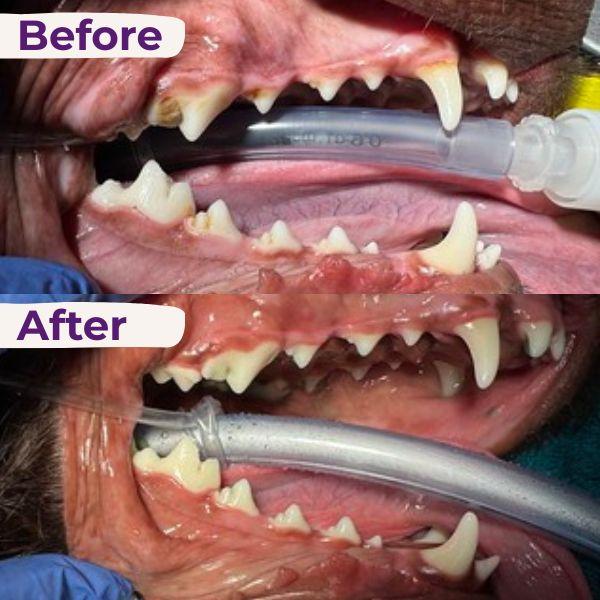
Dog Dental Care and Cleaning with Dr. Brumfield and Olive
Regular dental care is essential for your dog’s health. At Rogers Pet Clinic, we take every step to ensure your pet’s dental cleaning is safe, thorough, and stress-free. If you’ve ever wondered what happens during a professional dog dental procedure, this guide walks you through every stage—from check-in to recovery.
1. The Morning Check-In and Pre-Anesthetic Assessment
- Vital signs check: We measure temperature, pulse, and respiration.
- Pre-surgical questions: Our team discusses your pet’s medical history and answers any concerns.
- Pre-medication: To keep your dog comfortable, we administer:
- Cerenia – An anti-nausea medication to prevent post-anesthesia discomfort.
- Gabapentin & Trazodone – Medications to help reduce anxiety before sedation (given on a case-by-case basis).
2. IV Catheter Placement and Pre-Sedation
At this point, pre-sedation medication is given to make the transition into full anesthesia smooth and stress-free.
- IV Catheter Placement: Every pet undergoing anesthesia receives an IV catheter.
- IV Fluids: These are given during the entire procedure to maintain hydration, support blood pressure, and provide immediate vein access in case of an emergency.
3. Induction and Anesthesia Monitoring
Your dog is then moved into our dental suite, where they are placed under general anesthesia using isoflurane gas, a safe and effective anesthetic.
Extra Safety Step: Every pet gets a brand-new endotracheal (ET) tube (used to maintain an open airway). Unlike some clinics that reuse them, we discard and replace them for each patient.
Advanced Safety Monitoring
- End-Tidal CO2 Monitor – Helps detect changes in breathing and anesthesia depth early.
- SPO2 (Oxygen Saturation Monitor) – Ensures your pet is receiving enough oxygen.
- ECG (Electrocardiogram) – Monitors heart rhythm and detects irregularities.
- Blood Pressure Cuff – Ensures stable circulation throughout the procedure.
4. The Dental Cleaning Process
Step 1: Scaling and Plaque Removal
Tartar and plaque are removed using ultrasonic scalers (similar to those at your dentist’s office).
Step 2: Dental X-Rays
We take full-mouth digital dental X-rays to assess the health of tooth roots, bone structure, and hidden issues below the gumline. X-rays help us detect infections, cysts, or damaged teeth that may require treatment.
Step 3: Polishing and Fluoride Treatment
Teeth are polished to remove micro-abrasions where bacteria could accumulate, and a fluoride treatment is applied to strengthen enamel and reduce sensitivity.
5. Recovery and Post-Procedure Care
Once the cleaning is complete, your dog is gently woken up from anesthesia in a warm, comfortable recovery area.
- Smooth Recovery: Our sedation protocols ensure pets wake up calm and comfortable.
- Monitoring Until Fully Awake: We closely observe your pet for any signs of nausea, discomfort, or grogginess.
Going Home
- Detailed Home Care Instructions
- Pain Management (if needed)
- Dental Care Recommendations for At-Home Maintenance
Why Dental X-Rays Matter
Did you know that over 60% of dental disease is hidden beneath the gumline? That’s why we take full-mouth dental X-rays during every cleaning.
- Detects infections, root damage, cysts, and bone loss
- Helps us catch problems early before they become painful or serious
- Ensures we don’t miss underlying issues that might not be visible during a basic exam
Schedule Your Dog’s Dental Cleaning Today!
Regular dental cleanings help prevent painful infections, tooth loss, and long-term health issues like heart and kidney disease. If your dog is due for a dental exam or you’ve noticed bad breath, red gums, or tartar buildup, it may be time for a cleaning.
Call Rogers Pet Clinic today at (763) 428-8688 to schedule your pet’s dental appointment!
